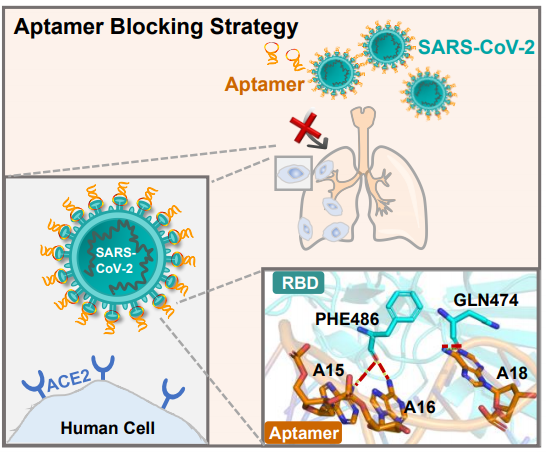Professor Yang
 Know more>>
Professor
Department of Chemical Biology, Xiamen University
Know more>>
Professor
Department of Chemical Biology, Xiamen University
Contact Information
Yang's LaboratoryRoom 532, Lujiaxi Building, College of Chemistry and Chemical Engineering, Xiamen University, Xiamen 361005, China
Ph: +86 (0) 592-218 7601cyyang@xmu.edu.cn
Miao Sun's paper has been accepted by Angew Chemie
2021-02-09 18:40:00

The COVID-19 pandemic caused by SARS-CoV-2 is threating global health. Inhibiting interaction of the receptor-binding domain of SARS-CoV-2 S protein (SRBD) and human ACE2 receptor is a promising treatment strategy. However, SARS-CoV-2 neutralizing antibodies are compromised by their risk of antibody-dependent enhancement (ADE) and unfavorably large size for intranasal delivery. To avoid the limitations of neutralizing antibodies, we proposed and demonstrated an aptamer blocking strategy by engineering aptamers’ binding to the region on SRBD that directly mediates ACE2 receptor engagement, leading to block SARS-CoV-2 infection. With aptamer selection against SRBD and molecular docking, aptamer CoV2-6 was identified and successfully applied to prevent, compete, and substitute ACE2 from binding to SRBD protein. CoV2-6 was further shortened and engineered as a circular bivalent apamer CoV2-6C3 (cb-CoV2-6C3) to improve the stability, affinity, and inhibition efficacy. With its circular form, cb-CoV2-6C3 aptamer was found to be stable in serum for more than 12 hours and can be stored at room temperature for more than 14 days. The circular bivalent aptamer binds to SRBD with high affinity (Kd of 0.13 nM) and blocks authentic SARS-CoV-2 virus with a halfmaximal inhibitory concentration of 0.42 nM. With its excellent affinity, stability, safety and programmability, our aptamer showed its capability to inhibit SARS-CoV-2 infection, suggesting aptamer blocking strategy as a new direction for developing therapeutic agents against COVID-19 and other emerging infectious diseases.
